The never-ending battle for king of the smartphones has never been more interesting, with the Samsung Galaxy S 4 leading the charge. Looking much like its very successful predecessor, Samsung is banking on its new-found brand swagger to convince people its latest is indeed the greatest.
The Galaxy S line has seen a level of success only felt on the smartphone scene by Apple with the iPhone, and the new Galaxy S 4 has done little to rock the boat. It has, however, packed the cargo hold full of stuff.
Like the Galaxy devices that came before it, the Galaxy S 4 is all plastic, including the parts that don’t look like plastic. My unit is glossy white, with a thatched texture that can only be seen, not felt. A faux metal band joins the gloss together, offering little change in texture, and unfortunately not a great deal of grip.
In hand feel isn’t the Galaxy S 4’s strong suit. Pick up any number of other handsets and they will feel nicer to hold, largely due to the materials used. For example, the Nexus 4 sandwiches a rubberised plastic band between its faces, and it feels solid and locked in your hand. The HTC One is a machined block of aluminium that doesn’t flex one way or the other. I wish the edges of the Galaxy S 4 was rubberised, as it would make it much less slippery.
That’s not to say the Galaxy S 4 is a badly made phone, because it isn’t. On my unit, the fit is very good, though I have managed to slightly crack the back panel with a 1m drop onto a fake wood floor. The crack is only cosmetic though, and hasn’t pierced through the cover.
As soon as you power it up, these sins are largely forgiven. The Galaxy S 4 has scored an upgrade from 4.8-inch 720p to a 5.0-inch 1080p display, and it’s simply gorgeous.
The display pushes hard at the sides of the phone, taking up as much space on the face as possible, while actually shrinking the new model slightly over the old. Despite only having 0.3-inches on the HTC One, the display feels MUCH larger, due to the skinny bezels. Comparatively, the display on the HTC One actually feels smaller than on the Nexus 4, despite them being the same size, due to its bezels.
AMOLED has always stood for exploding colours and inky blacks, and while the latter is true, Samsung has clearly worked on the former. Out of the box the colours are more muted than the GS III, which sent colour saturation off the scale. The result is still very vibrant colours, but appearing much more natural, closer to the best IPS displays on the market.
Outdoor usability is decent, though it can’t match the searing levels of brightness offered by the HTC One.
The display still uses a PenTile arrangement for making up the pixels, but unless you get in really close and look for it, you can’t see it.
The back panel peels off to reveal the removable 2600mAh battery, microSD and microSIM slots. 16, 32 and 64GB versions of the Galaxy S 4 will be available, but with the low-cost of microSD cards, the 16GB device is probably the one to go for.
Since getting the Galaxy S 4 I have installed a SanDisk 64GB microSD to augment the ~9GB of available internal storage. I have basically dedicated the internal storage to photos, while the SD card fills up with music and videos. Being able to slip the 30MB/s card out of the phone into a fast USB 3.0 reader is quite a bonus.
The Galaxy S 4 will support wireless charging, using a replacement battery door that connects to contacts above the battery.
The insides of the Galaxy S 4 will depend on what market you hail from. Most of the world will get the model I have, the i9505, with the Snapdragon 600 found in many other top-tier smartphones (including the HTC One), as well as 4G LTE. The i9500 sacrifices the LTE radio for the Exynos Octa big.LITTLE processor.
Clocked at 1.9Ghz, it’s certainly no slouch. Thanks to the healthy 2GB of RAM, I never found myself needing to manage running applications manually, let the system work its magic behind the scenes.
There is the very occasional hint of lag, something that affects all Android phones, but on the whole it provides smooth performance in my day-to-day usage. Switching from the standard TouchWiz to the Nova Launcher in the Play Store all but alleviated lag from my Galaxy S 4, though the multitasking screen still has a slight delay. Hopefully this will be sorted in a software update.
As expected, 1080p video playback is not a problem.
While the hardware is a mix of elation and disappointment, the software is probably best described as moderately organised chaos.
Buy a Nexus device and things are relatively simple, if a little dull. Buy a Galaxy S 4, and you will be simply overwhelmed by the software features on offer.
Multi window, S Beam, Air View, Smart scroll: these are just some of the bewildering amount of features that Samsung has crammed into the Galaxy S 4.
Let me start with some of the features I’m actually using. Air View operates similarly to the way the S Pen stylus works on Samsung Note devices, allowing you to hover over items to get more information and larger previews of onscreen elements. Instead of a stylus, it works with your fingers, and it’s quite remarkable in use.
Despite holding your index a centimetre above the glass, the phone already sees it and starts working its magic. In the Gallery photos enlarge, in the video player it enlarges the thumbnail and starts playing it, stopping immediately when you pull your finger away.
My favourite use is in the S Planner (because the term “Calendar” just isn’t signature enough for Samsung). In month view, hovering over a day displays a list of all your appointments, making searches notably easier.
What I’d love to see is an update expanding the list of supported applications. The ability to preview emails in Gmail or drop down hover menus in Chrome would be awesome additions that I’ve wished for as I’ve used the Galaxy S 4.
“Motion and Gestures” ties in a number of features, including waving your hand or putting the phone up to your ear to initiate actions. I figure I’ll get better acquainted with these features over time, though at times I feel like a crazy person trying to use them.
Waving your hand across the face displays a compact overview of clock, signal, battery and notifications which works well, but looks like your stroking your phone like a cat. I’d happily do without the animation too, and just have the info appear instantly. The delay takes the shine of it somewhat.

Waving your hand over the display when it’s off displays the time, date, and notifications for a few seconds before fading away.
Smart Stay and Smart Scroll increase the Galaxy S 4’s awareness of you even further. Stay keeps a watch on your eyes, so that the display doesn’t dim or flick off while you’re looking at it. Scroll takes this further, allowing you to scroll up and down webpages in the stock Browser.
Smart Scroll works ok, but for me it tends to send the page flying off uncontrollably on occasion, not to mention it looks plain weird tilting and nodding your head at your phone. It’s incompatibility with Chrome rules it off the list of features I use.
One I do like is multi-window. Think of it just like multitasking on your computer, where you have two windows side by side. On the Galaxy S 4 the windows take up 2/3 and 1/3 of the display respectively.
The list of supported apps is somewhat limited (at least among the apps on my Galaxy S 4), but when it works its pretty cool. Chatting on Google Talk or playing a video while browsing in Chrome is pretty darn cool.
You can easily swap out the apps sharing the screen by dragging them from the switcher that slides out from the left.
All this bastardisation of Android will instantly turn a lot of geeks off, preferring a “pure” Google Android experience. Lucky for you there is a Nexus-style version of the Galaxy S 4 coming in June, offering the latest version of Android without any carrier or manufacturer modifications.
Personally I’m not a fan of the TouchWiz interface itself, with its old school icons and odd quirks (like the inability to modify the dock on your home screen).
I have switched to the Nova Launcher with the Tersus icon pack, which makes things much more stylish and customisable.
The HTC One has made big boasts about two features in particular: the 4 “Ultrapixel” camera and BoomSound, a marketing term for the stereo speakers.
The camera on the One is ok, but my experience with the Galaxy S 4’s camera ranges from same to better. The 13 megapixel images from the Galaxy S 4 look better in high light situations, and if you resize images taken in low light they don’t look appreciably different from those taken on the HTC One.
There is no contest when in comes to the speakers, however, as the HTC One has every single phone on the market beat. Packing in two speakers on the front face of the phone, the HTC One sound loud and exceptionally clear.
The speaker on the back of the Galaxy S 4 is good, but it’s nothing exceptional. It’s similarly loud, but doesn’t produce nearly as pleasing a sound, and the at-firing mono speaker is easily muffled unless the Galaxy S 4 is laying on a hard surface.
The Galaxy S 4 has astounded me with how long it lasts on a charge. Despite the huge, 1080p display, 4G LTE and the plethora of sensors monitoring my every action, the Galaxy S 4 hasn’t had any trouble lasting through a fairly thorough day of calls and general usage. With about 5-6hrs screen time, for a total of 16 hours off the charger, I still have about 20% battery left when putting the Galaxy S 4 on charge late in the evening. Lower screen time will result in significantly longer standby times.
Like the iPhone, it is also a fast charger, happily turning 15 minutes tethered to the wall into a usable boost in percentage.
When the latest round of Android “super phones” were announced, I pretty quickly set my sights on a black HTC One. Solid metal body, 4.7-inch 1080p display, and horsepower to spare, it looks to be the ideal antidote to my feverish iPhone addiction.
But much to my surprise, the Galaxy S 4 has been the phone I’ve reached for every morning.
Like all smartphones, the Galaxy S 4 has its strengths and weaknesses. The continued use of plastic for everything but the display will disappoint many, as will the inclusion of Touch Wiz. But considering the success of the Galaxy S line-up, it’s hard to argue with Samsung’s choices; they are looking to please the masses, not the vocal online minority.
These things aside, the Galaxy S 4 has an awful lot going for it. The new 1080p AMOLED display is top-notch; it’s more compact than its predecessor, despite increases in screen size and performance, plus its battery life is able to make it through a day without trouble. Add to that fast 4G performance on my local network, and my HTC One may be looking for a new home.
The Samsung Galaxy S 4 is available outright and on carriers worldwide.
What I Like: Excellent display, Battery life, Air View, Multi-window
What Needs Improvement: Rubberised sides would improve feel and grip
Source: Purchased by the reviewer.






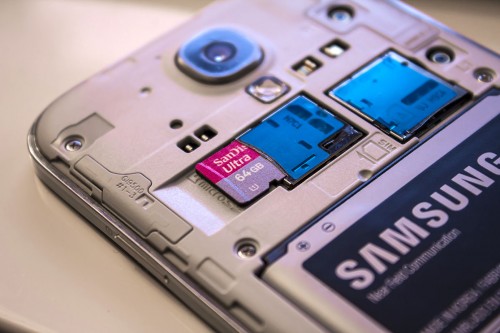

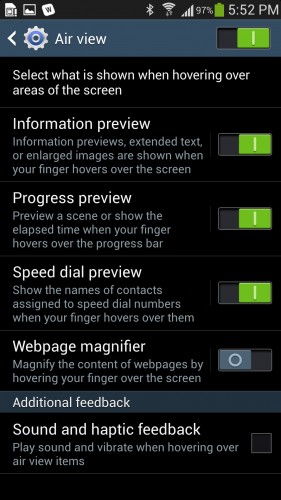
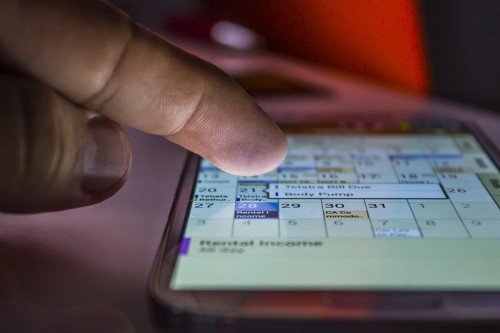
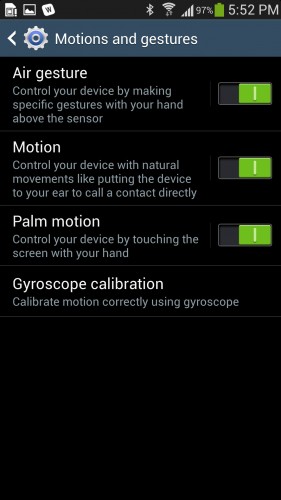










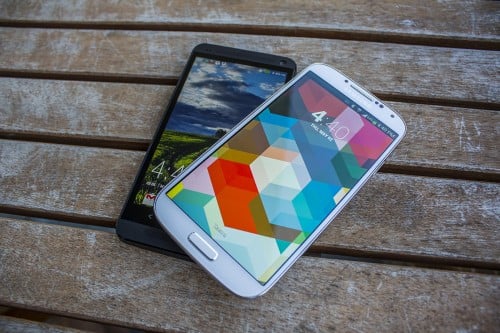

Great review – as I said before, regardless of hand-wringing about ‘evolutionary’, Samsung copies Apple in pretty much every way, so why not copy the success of taking an evolutionary change approach?
Very thorough review, Mitchell! Curious to see if Samsung will retain its “King of the Android Hill” status with this release…how many S3 folk will even consider upgrading to the S4?